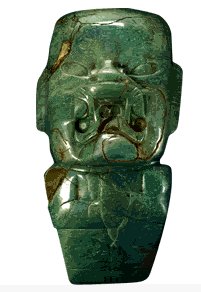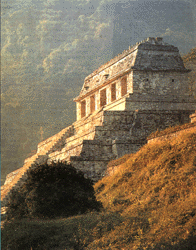Artifacts, Architecture, and Arts
Directory:
1.) Arts
2.) Architecture
3.) Image Gallery
4.) Home
Olmeca Art


Olmeca art, through the period from 1300-600 B.C., felt great change from its original simple form which consisted of dirt mounds surrounded by basalt pillars which encompassed the simple burial site. This increase resulted in an amazing array of beautiful atifacts ranging in material from hard basalt to delicate jade.
Olmeca sculpture was one of its most precise arts. The Olmecs sculpted enormous monumental heads which demonstrated perfect human like proprtions. In contrast they sculpted many of their strange and unusal gods, which ranged in appearance from strange snake eagles to their most reveared jaguar god. Although we aren't sure exactly what techniques the Olmecs used to sculpt, we do know that the sculptures they did somehow accomplish were amazing and precise in proprtions and shape.
Olmeca Architecture

The Olmecs shared many of the same architecture with the rest of Mesoamerica. The Olmec cities were centered around a grand ceremonial mound which was heavily decorated with their many beautiful, elaborate and sometimes frightening stone carvings. These decorative carvings depicted innumerable deities and gods. Also found in perfusion among the temples and the cities were ball courts. These courts were the playing rounds for a game in which players try to score by throwing a rubber ball into holes carved in the walls of the "I"-shaped court. Present also in the cities was evidence of city planning. The cities were laid out in several districts on a grid formation which sectioned the artisans, farmers, and merchants. In all, Olmeca architecture was complex yet similar in many ways top the rest of Latin America's building styles.